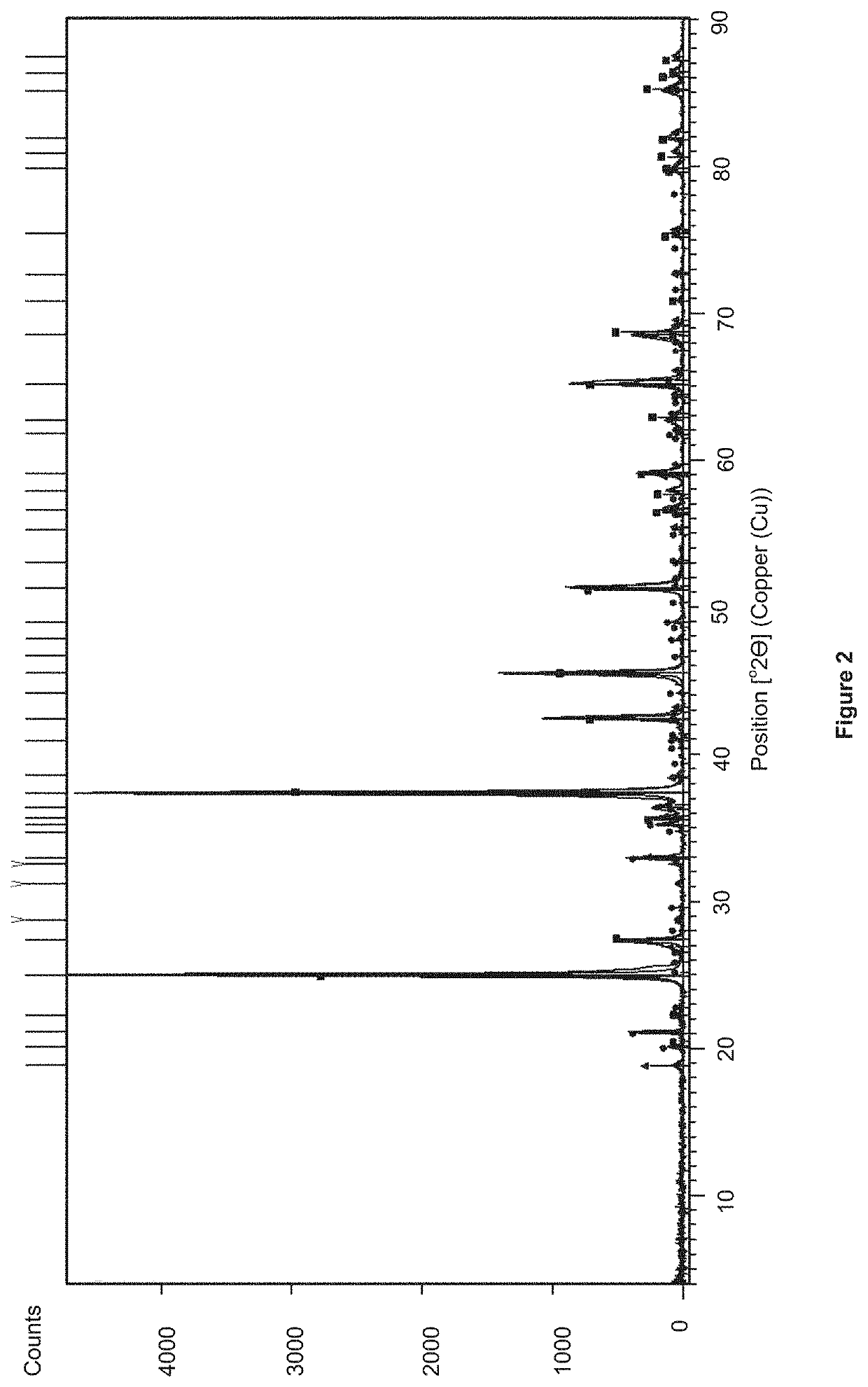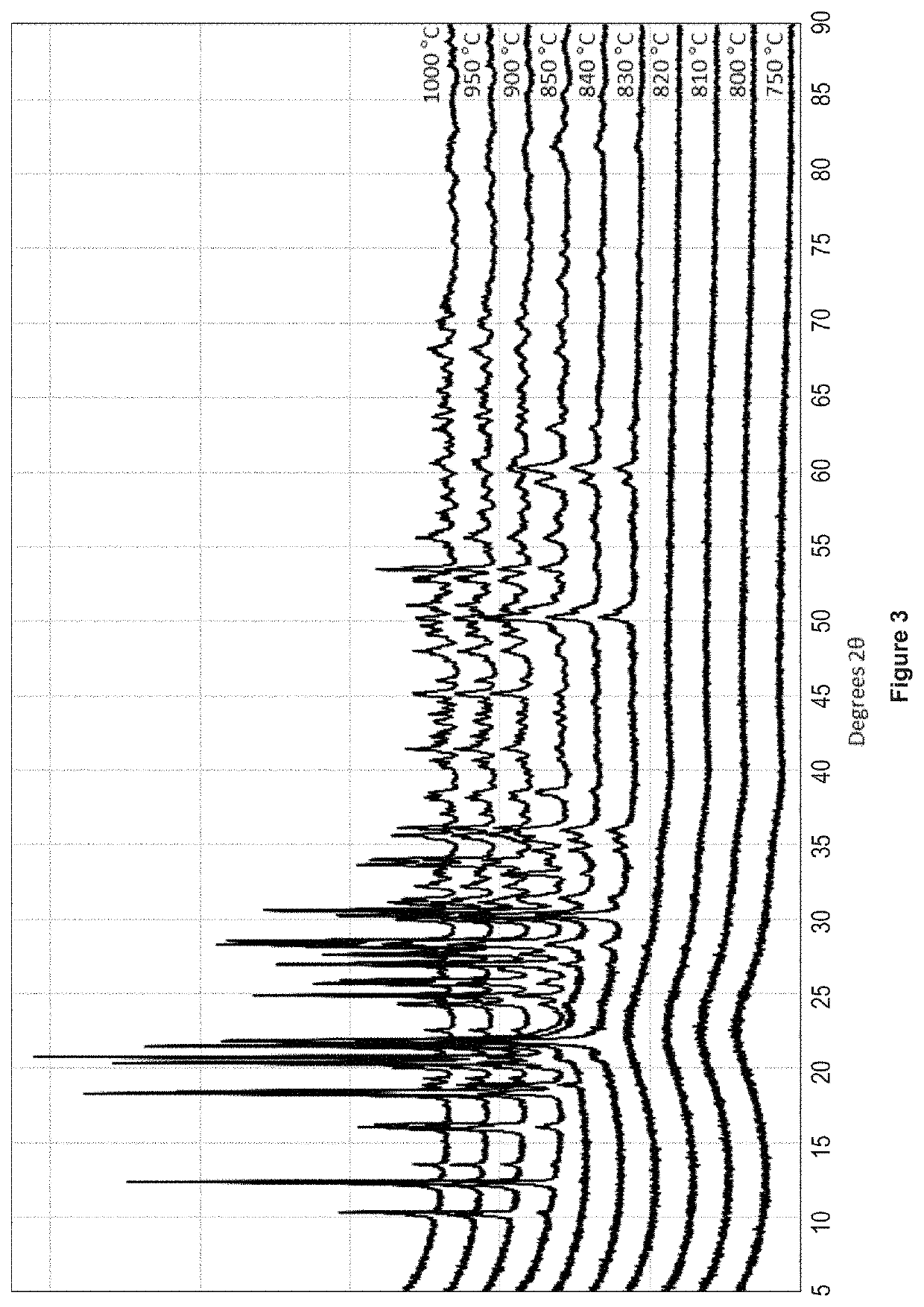Energy storage device and ionic conducting composition for use therein
a technology of energy storage device and composition, which is applied in the direction of cell components, silicates, silicon compounds, etc., can solve the problems of increasing the chance of short circuit, limiting the working thickness of conventional separator films, and increasing the likelihood of short circuit in an adjacent area, so as to increase the tensile strength of membranes, increase the ionic conductivity, and similar shrinkage performance
- Summary
- Abstract
- Description
- Claims
- Application Information
AI Technical Summary
Benefits of technology
Problems solved by technology
Method used
Image
Examples
examples
[0302]Fibres were formed using the sol-gel or melt spinning or blown method. The sol-gel samples are crystalline, whilst unless otherwise specified the melt samples are amorphous.
Melt Spinning Method
[0303]Fibres according to the invention have been produced by spinning [made from the melt by forming a molten stream and converting the stream into fibre by permitting the stream to contact one or more spinning wheels], at the applicant's research facilities in Bromborough, England by spinning or alternatively by blowing fibres made from the melt by forming a molten stream and converting the stream into fibre by using an air blast directed at the stream.
Samples
[0304]The fibrous samples were pelletised at pressures of 500-700 MPa after having been ground in a pestle and mortar. The green pellets (approximately 15 mm diameter×2 mm depth) were subsequently fired at temperatures ranging from 600-900° C. depending on the specific composition of the fibre. DSC was used to determine the sinter...
PUM
| Property | Measurement | Unit |
|---|---|---|
| wt % | aaaaa | aaaaa |
| temperature | aaaaa | aaaaa |
| arithmetic diameter | aaaaa | aaaaa |
Abstract
Description
Claims
Application Information
 Login to View More
Login to View More - R&D
- Intellectual Property
- Life Sciences
- Materials
- Tech Scout
- Unparalleled Data Quality
- Higher Quality Content
- 60% Fewer Hallucinations
Browse by: Latest US Patents, China's latest patents, Technical Efficacy Thesaurus, Application Domain, Technology Topic, Popular Technical Reports.
© 2025 PatSnap. All rights reserved.Legal|Privacy policy|Modern Slavery Act Transparency Statement|Sitemap|About US| Contact US: help@patsnap.com



